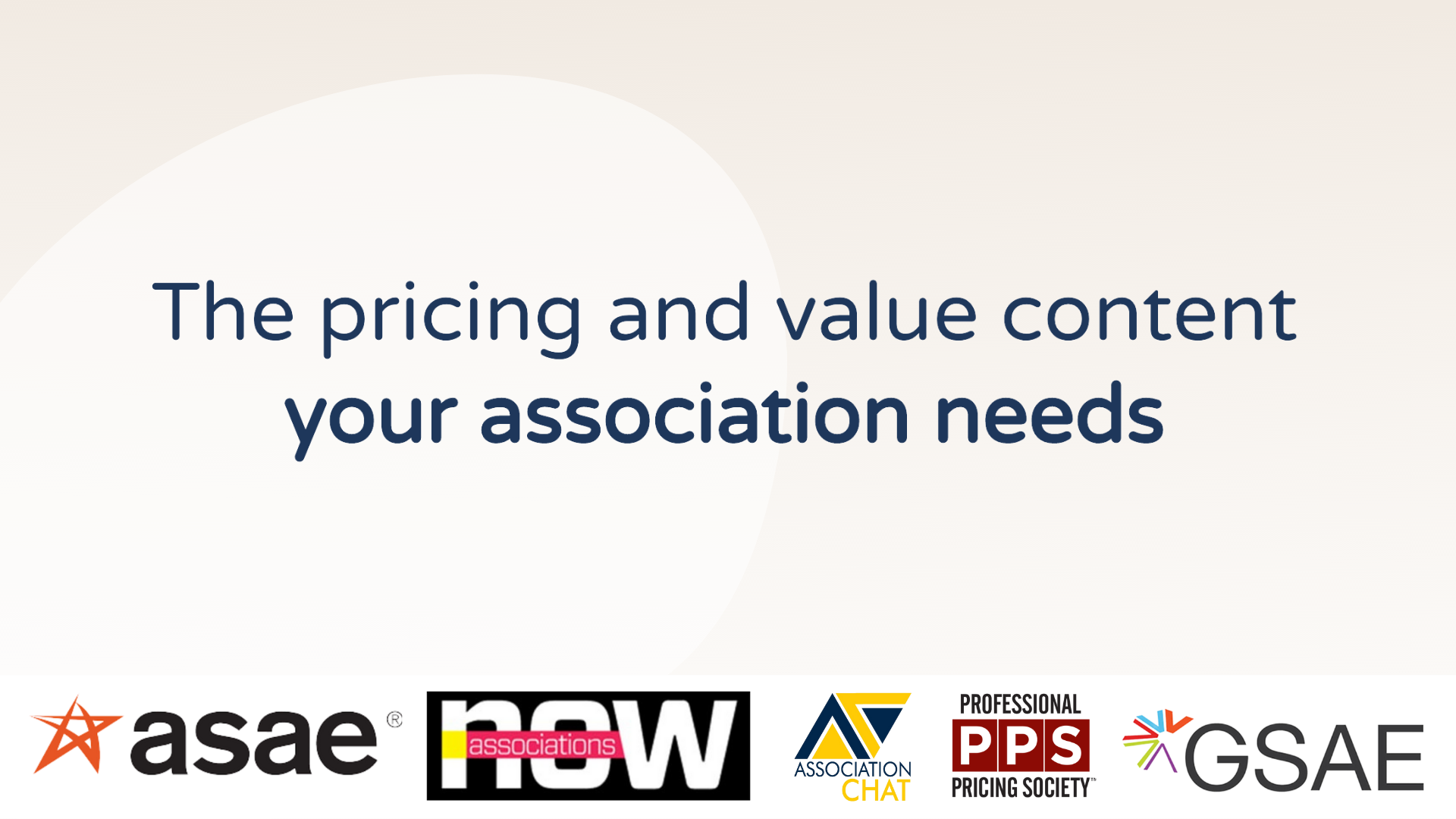Create a “Pandemic-Proof” Pricing Strategy
This article originally appeared on AssociationsNow.com. Reprinted with permission. Copyright ASAE: The Center for Association Leadership (2021), Washington, DC.
To offset financial losses caused by the pandemic, many associations are wondering how to price products in ways that generate much needed revenue. A pricing expert explains why it’s now a good time to reset and price according to value.
Most people wanted to be past the pandemic by now and getting back to normal. But with COVID-19 still here, associations are trying to work in the current environment and get away from their free offerings that were prevalent in 2020. Michael Tatonetti, CAE, founder and CEO of Pricing for Associations, said groups should focus on pricing strategies now to help reset their revenue.
“Now, in particular, is a good time because we are heading into whatever the next new normal is,” Tatonetti said. “Now is an opportune time to revisit what the value is, the pricing, what should we sunset, what should we expand, and what we should create new.”
Tatonetti, who recently published How to Create a Pandemic-Proof Pricing and Value Strategy for any Association, said the key to determining the right price is figuring out the value of the product to your audience, and that requires data.
“The big thing there is trying to rely on market research, so surveying your people, your actual members or whoever the constituents are—sponsors, attendees,” Tatonetti said. “Rely on that. Do surveys, feedback, and focus groups.”
Most organizations also have sources of data within their reach already, meaning they may not have to go out to do new research.
“To the best of your ability, get that data from the [association management system] and [learning management system],” Tatonetti said. “What value components are [customers] most taking advantage of? If it’s an event, what types of talks, or what tracks, or lunches, or networking talks? If it’s membership, what are people consuming the most? Is it the webinars, the podcasts, the blogs, the discussion boards? That will give you a good idea of what value matters most.”
Value can be viewed both quantitatively and qualitatively. The qualitative feedback can be helpful in articulating the value to members. Tatonetti noted that he recently worked with a client that revamped a database for members. The organization updated tagging so searches yielded better results. The quantitative feedback was that members could find information quicker and more accurately. The qualitative feedback revealed a key selling point for the database.
“One specific person said, ‘I look better to my boss now because he trusts me when he says: Hey, can you find out the answer on this? I know I can go log in to my portal, find the answer within an hour, and come back and report it out, and I look good,’” Tatonetti said. “That matters to members.”
Because associations sell everything from membership to events and publications, looking at all product pricing can seem like an overwhelming task. Tatonetti said an association doesn’t need to evaluate all its prices right now. “Take one or two, start there,” he said. “Take a day or two for each one. Then, maybe in six months or in a year, you can look at another one or two and snowball it. In a few years, you’ve cycled through everything.”
When evaluating prices for a current product, there will be historical data to work with and information about what people have said they value. With a new product, associations have to base pricing on market research and have a plan for evaluating if the pricing strategy is working.
“With something brand new, you should have some kind of key performance indicators established of what success looks like,” Tatonetti said. “How many enrollments? And by what timeline?”
If a new product doesn’t hit its targets, do some more research before adjusting the price, asking users who purchased it how it’s going. In addition, consider sending a general survey to a small segment of non-users. “Say, ‘Hey we launched this program, and we noticed that you didn’t partake in it. If you considered it, we would love to do this survey to give us feedback,’” Tatonetti said.
Pricing is about making sure your prices match the value and bring the most return for the organization. “It doesn’t mean you are going to completely redo the strategy or raise the price drastically every single year, but every year, there should be some sort of a review for each program,” Tatonetti said.


